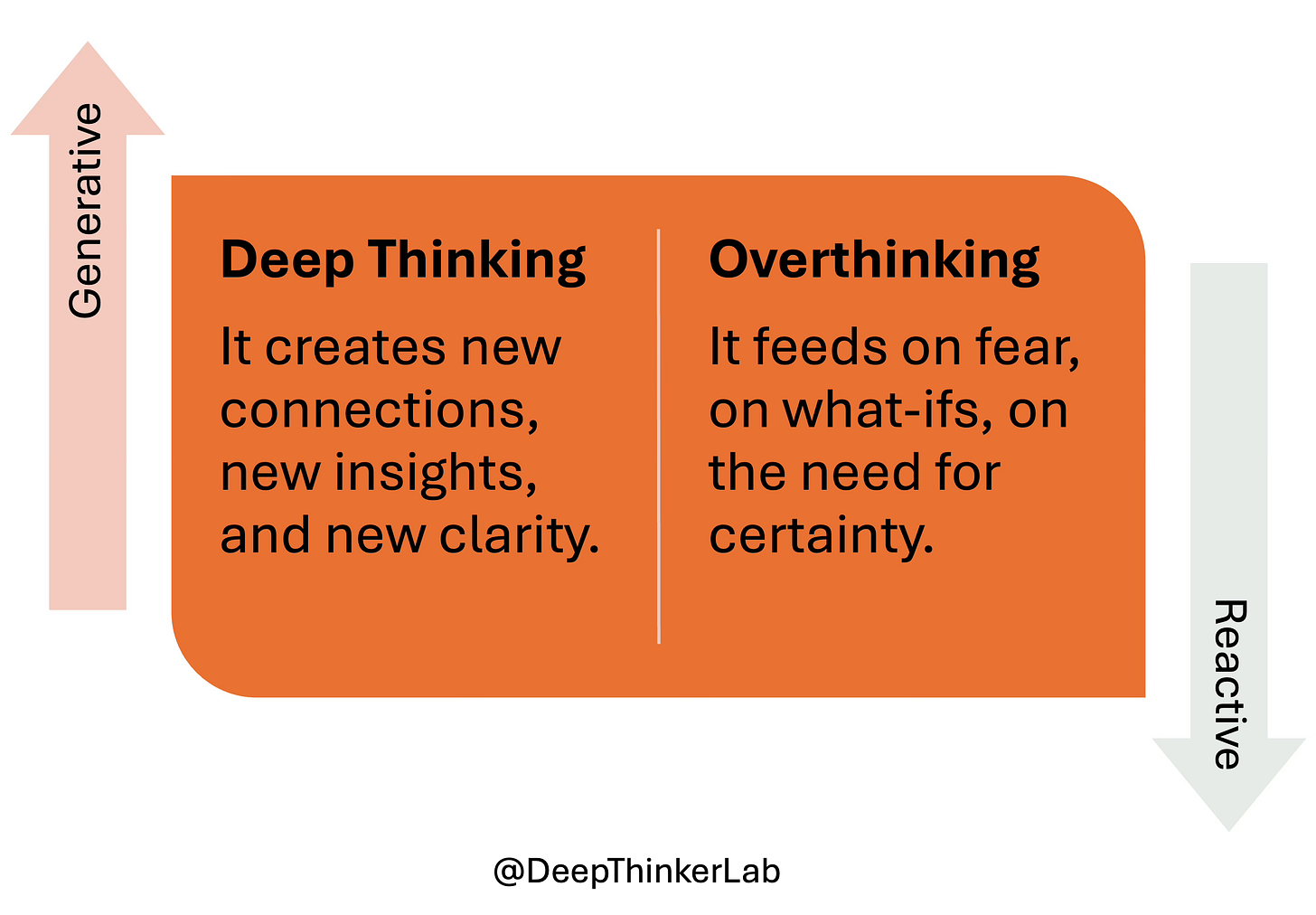In 1971, psychologist Daniel Kahneman conducted a foundational series of experiments titled "Beliefs in the Law of Small Numbers" that would forever change the way we understand the mind. He found that when people were asked to make simple choices—such as between two brands of jam or two different cars—they often became less confident and less satisfied the longer they spent analyzing the options. The paradox was startling: the harder people thought, the worse their thinking became.
We like to imagine that thinking more automatically means thinking better. Yet what Kahneman uncovered—what most of us have felt late at night, staring at the ceiling—is that there’s a sharp difference between thinking deeply and overthinking. One leads to clarity. The other traps us in confusion.
The Trap of Overthinking
Overthinking feels like fruitless work. You’re turning a problem over and over in your mind, replaying conversations, rehearsing possibilities, analyzing every angle. But notice what’s missing: progress, clarity, understanding.
Overthinking is circular. It loops back on itself. You start with a question—Should I take that new job?—and 90 minutes later you’re still at square one, except now you’re anxious, exhausted, and somehow less certain than when you began.
Psychologists call this rumination, and the costs are obvious.
Sleep deprivation.
Energy drains.
Decision paralysis.
As such, you’re caught in a mental spin cycle, working hard but going nowhere.
The Discipline of Deep Thinking
Deep thinking looks very different. Instead of circling, it moves forward. It takes the same raw material—uncertainty, options, unanswered questions—but treats them with patience and purpose.
Deep thinkers pause before they decide and ask what assumptions might be hiding beneath the surface. They ask themselves reflective questions that lead to relevant answers and consider perspectives beyond their own. They also don’t rush to the first answer, but they don’t get lost in a thousand answers either.
Think of it as architectural rather than mechanical. Overthinking is like spinning the same gears faster and faster. Whereas, deep thinking is like laying bricks—slowly, deliberately—until a structure begins to emerge. Overthinking breeds tension, deep thinking brings curiosity, even satisfaction. The effort feels different, too.
Why the Difference Matters
The line between deep thinking and overthinking is not about the amount of thought or the effort, but rather it is about direction and purpose. One diminishes us. The other builds us.
And in a world that rewards speed and snap judgments, the discipline to think deeply—not endlessly—is rare. But it may also be one of the most valuable skills you can develop.
The Takeaway
The next time you find yourself caught in mental loops, ask: Am I circling, or am I building?
Overthinking leaves you anxious, drained, and stuck. Deep thinking leaves you informed, prepared, and—eventually—clear. The trick is knowing the difference, and knowing the difference isn’t just awareness—it’s practice. Here’s a simple three-step shift you can use to move from overthinking to deep thinking:
1. Pause
Stop the spin. Overthinking feeds on endless motion. Set a boundary: a 20-minute timer, a break for a walk, or even writing your thoughts down. Pausing creates mental space for clarity to enter.
2. Reframe
Change the question. Instead of “What if everything goes wrong?” ask “What do I need to know to make a better choice?”Overthinking magnifies fear; reframing shifts the mind toward discovery and solutions.
3. Build
Treat your thoughts like bricks, not gears. Start layering insights: What patterns emerge? What principles apply? What’s the next step I can act on, even if the picture isn’t perfect? Building moves you forward, while circling keeps you stuck.
Deep thinking doesn’t require more effort than overthinking—it requires different effort: structured, purposeful, and constructive.




